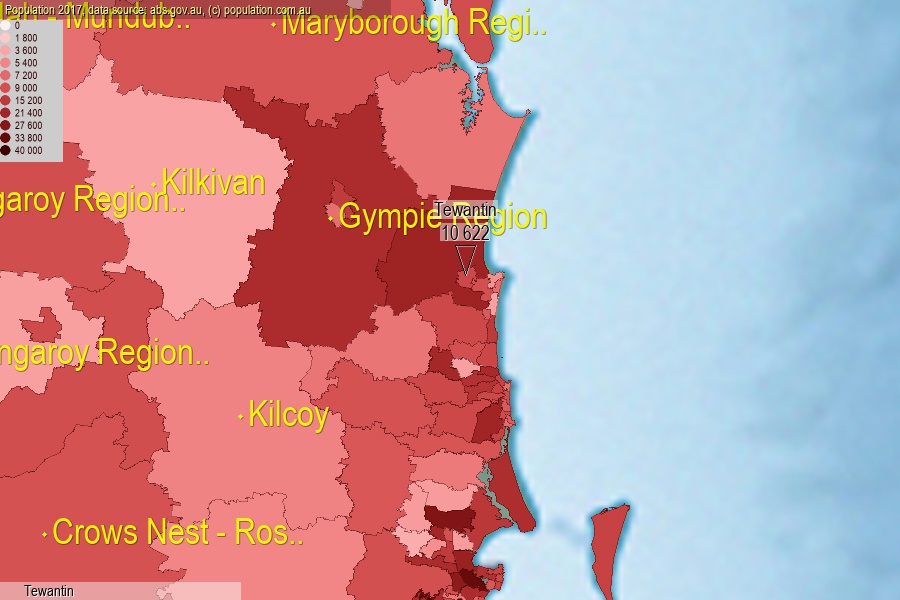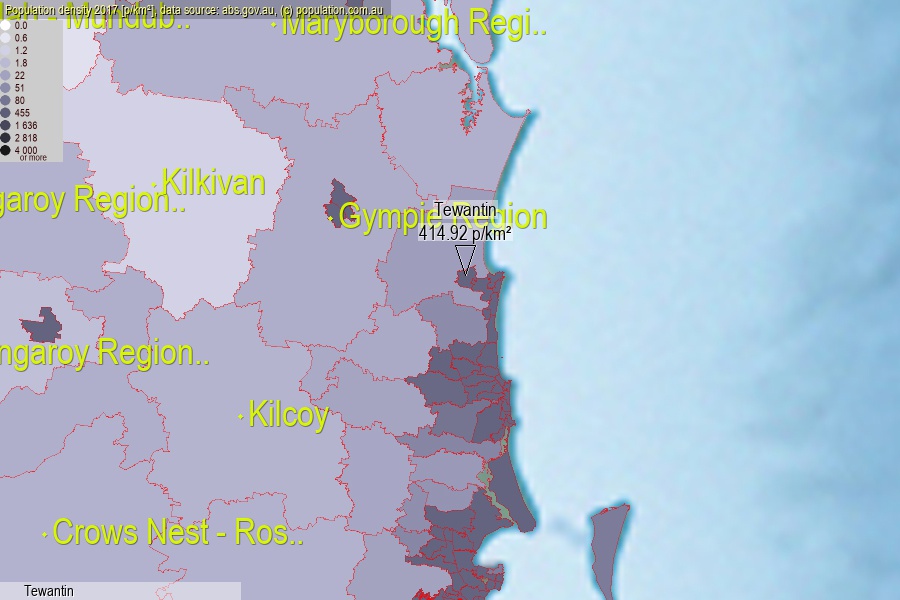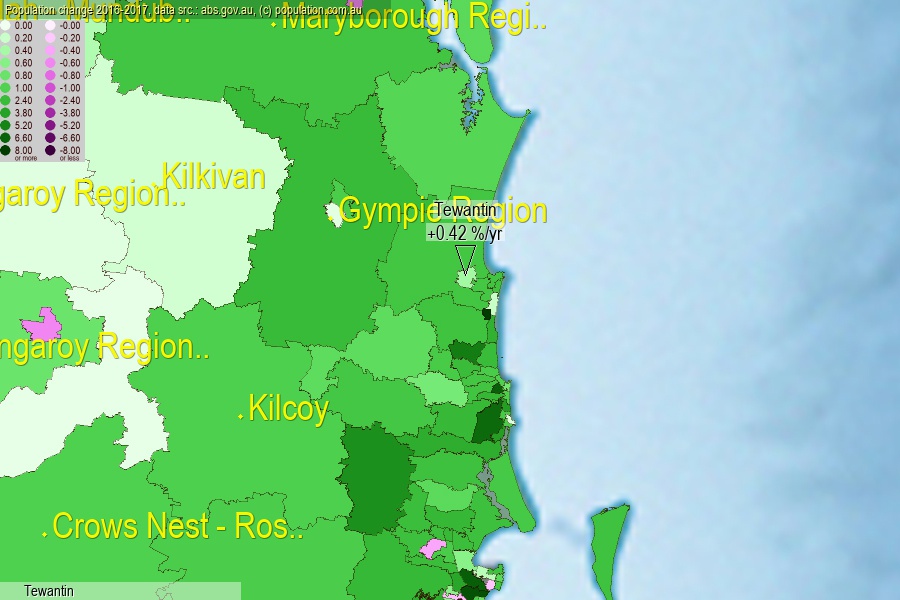 population.com.au
population.com.auLast official estimated population of Tewantin (as Statistical Area Level 2) was 10 622 people (on 2017-06-30)[2]. This was 0.04% of total Australian population and 0.213% of QLD population. Area of Tewantin is 25.60 km², in this year population density was 414.92 p/km² . If population growth rate would be same as in period 2016-2017 (+0.42%/yr), Tewantin population in 2025 would be 10 981. [0]



Click to enlarge. Tewantin is located in the center of the images.
Population [people], population density [p./km²] and population change [%/year] [2]
View borders » (new window) [4]
[1991-1992] +10.77 %/Yr.
[1992-1993] +5.73 %/Yr.
[1993-1994] +13.17 %/Yr.
[1994-1995] +8.85 %/Yr.
[1995-1996] +9.21 %/Yr.
[1996-1997] +5.63 %/Yr.
[1997-1998] +4.26 %/Yr.
[1998-1999] +2.59 %/Yr.
[1999-2000] +4.08 %/Yr.
[2000-2001] +3.58 %/Yr.
[2001-2002] +3.90 %/Yr.
[2002-2003] +2.93 %/Yr.
[2003-2004] +1.46 %/Yr.
[2004-2005] +0.63 %/Yr.
[2005-2006] -0.42 %/Yr.
[2006-2007] +0.02 %/Yr.
[2007-2008] +1.15 %/Yr.
[2008-2009] +0.72 %/Yr.
[2009-2010] -0.16 %/Yr.
[2010-2011] -0.69 %/Yr.
[2011-2012] +0.36 %/Yr.
[2012-2013] +0.31 %/Yr.
[2013-2014] +0.86 %/Yr.
[2014-2015] +0.29 %/Yr.
[2015-2016] +0.29 %/Yr.
[2016-2017] +0.42 %/Yr.
[0] Calculated with linear interpolation from officially estimated population
[1] Read more about SA2 and Australian Statistical Geography Standard (ASGS) on abs.gov.au
[2] Population data from Australian Bureau of Statistics (Population and density: 2017; change: 2016-2017)
[3] Digital Boundaries: Australian Statistical Geography Standard (ASGS) 2016.
[4] Border coordinates are simplifyed using Ramer-Douglas-Peucker algorithm.